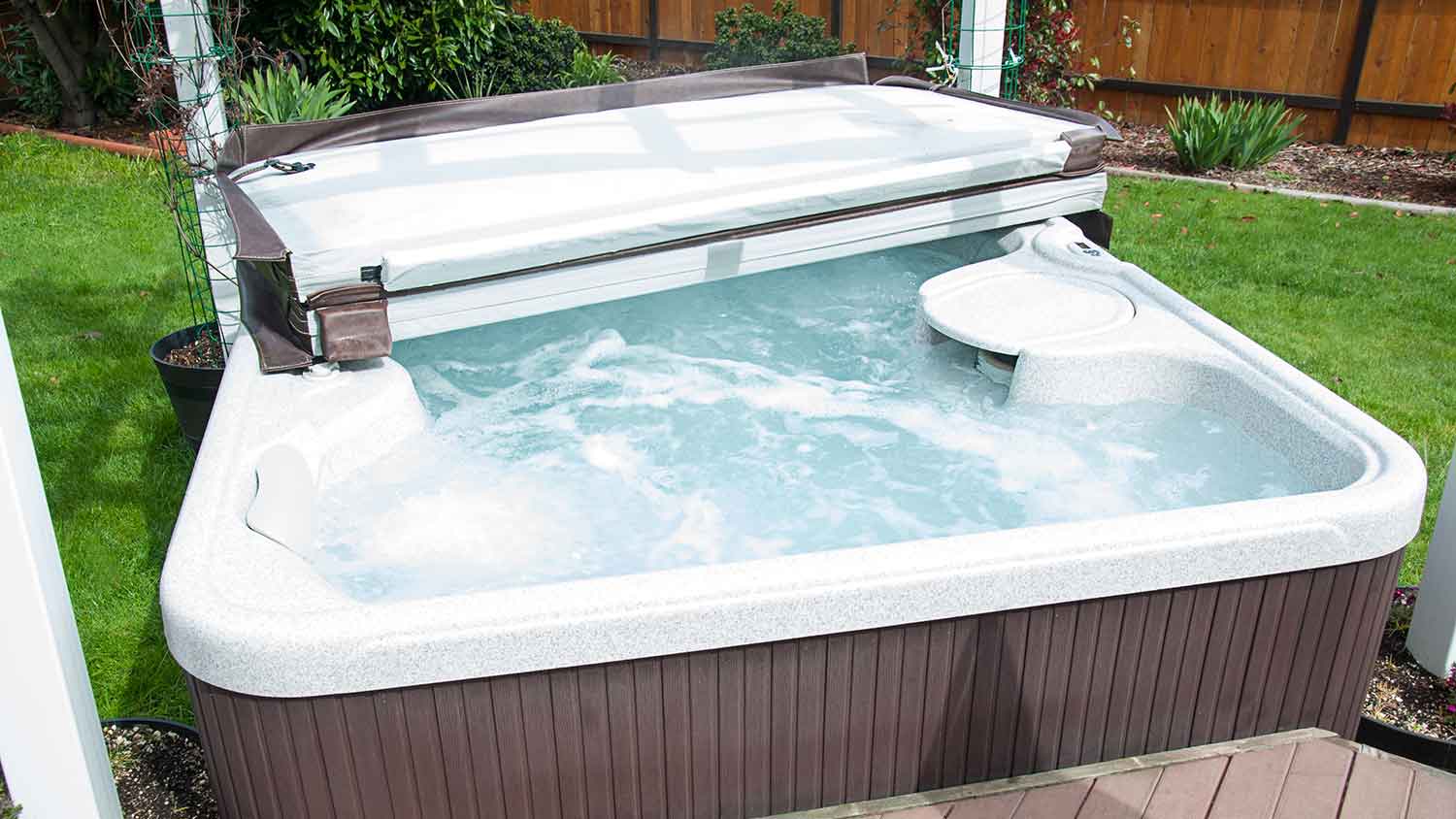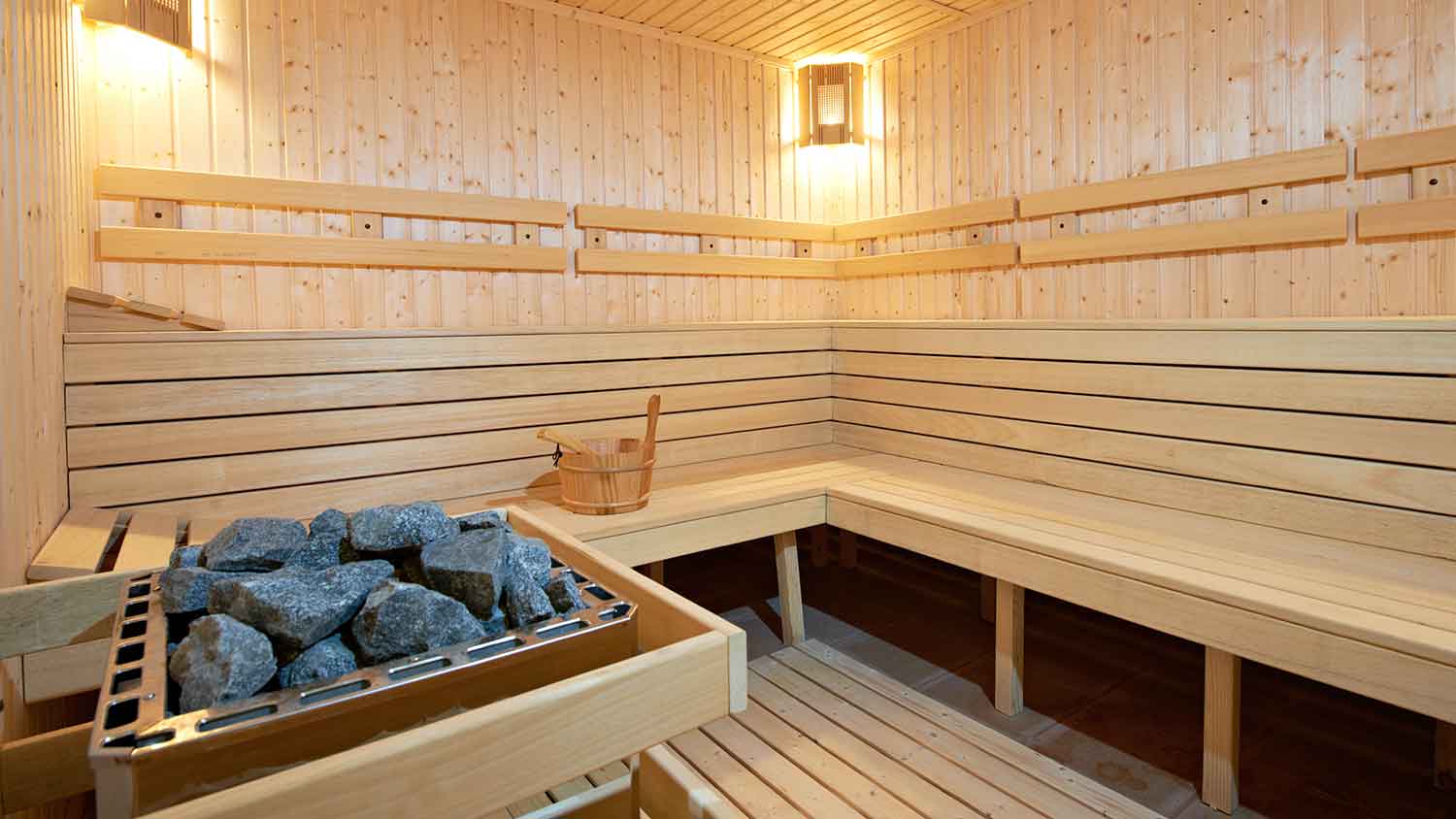
Wondering about hot tub cover costs? Learn what impacts pricing, compare materials, and discover ways to save on your next hot tub cover purchase.
How much energy does it take to run your home sauna?


An average home sauna uses 9 to 13 kWh of energy in a typical session.
The amount of time spent using your sauna has the biggest impact on energy costs.
Proper insulation reduces heat loss, which lowers sauna energy use.
Having a home sauna gives you a place to relax and unwind after a hard day. The amount of electricity a sauna uses, however, should factor into your decision to purchase or build one for your home. This article will give a rough idea of the amount of power you will need, the costs associated with that, and how to lower them potentially.
The heater in a home sauna uses an average of 6 kW (kilowatts) of electricity while heating the room to the appropriate temperature. Once properly heated, energy expenditure eventually drops to about 3 to 4 kW during your session, since maintaining the temperature requires less heat.
Average home sauna electricity use sits at around 9 to 13 kW hours per one-hour session if you factor in the time to prepare the sauna. That being said, the amount of electricity a home sauna consumes can vary depending on several different factors:
The size of the sauna
How effectively the sauna area is insulated
How long the sauna runs
The sauna heater’s size
How high the sauna’s temperature gets
If you want to calculate the electricity a sauna uses monthly, multiply its output by the usage per hour and the number of uses per month.
[Sauna heater kW] x [duration of sessions] x [number of sessions] = [monthly amount of electricity use]
When it comes to calculating the duration of your sauna session, be sure to account for the time spent getting the sauna up to the proper temperature before you use it.
Knowing the amount of electricity your sauna uses is vital for knowing how much it costs to run. The price of utilities can be a major determining factor for deciding whether or not to install a sauna in your home. After all, it is difficult to relax if doing so costs you an arm and a leg.
If you want to estimate the cost of the electricity your sauna uses, multiply the heater’s wattage by the number of sessions per month and the amount your utility company charges per kilowatt hour. In the United States, the average consumer cost of electricity is $0.12 per kilowatt hour, but the local utility company’s rate will vary from state to state.
For example, a sauna running for 90 minutes (30 minutes heating up and 60 minutes in use) each day for 30 days will run for 2,700 minutes or 45 hours. If the heater operates at 6 kW per hour, that works out to 270 kilowatt hours (kWh) per month. So, if the average cost of electricity is $0.12 per kWh, that sauna will cost:
[270 kWh per month] x [$0.12 per kWh] = $32.40 per month for an hour a day in a 6 kW sauna
Of course, the more you use your sauna, the more you will spend on electricity costs.

Though electricity usage is a relatively small part of home sauna cost, it is the one over which you have the most control. There are several factors in a sauna’s energy usage where you can introduce a measure of efficiency. As a result, you can noticeably lower your energy bills even if you use your home sauna a lot.
A sauna can take between 30 minutes to an hour to heat to the desired temperature, so it can be easy to get lost doing other things while waiting. Keep in mind, though, that every minute you spend not luxuriating in your appropriately warm sauna is another minute you will have to run the heater once you are in it.
The easiest way to lower energy use is to cut down on wasted electricity by using your sauna as soon as it is warm. You can set a timer or reminder on another device to let you know when the sauna is ready.
Saunas come in two types: traditional and infrared. When considering infrared versus traditional saunas, an infrared sauna does not use as much energy on average.
Because infrared rays apply heat directly to the body, they do not need to heat the air around you as much. The reduced need for heat means they use less energy to raise the temperature.
Though traditional saunas use more energy due to heating the air in the room, they can get the temperature much higher. If you use a wood-burning stove filled with heated rocks instead of an electric heater, you can significantly reduce the amount of electricity your sauna uses. Traditional saunas also have fewer electrical elements prone to failing, so they can last slightly longer than infrared saunas if you keep up with maintenance.
Insulation serves to keep the heat from escaping the enclosed area of your sauna, but only if it is intact. Improper insulation leads to heat leaks, which in turn makes the sauna heater work harder to maintain the temperature. The more the heater has to work, the more energy it uses, driving up the cost of running your sauna.
Quality wood is usually enough to insulate an indoor sauna if you have managed to keep it well sealed. You can also use fiberglass rolls or thermoplastic boards, especially if you have an outdoor sauna.
The internal volume of your sauna determines the size of the heater you will need. If yours is too small, it will spend more time and energy getting the area to the right temperature. Each sauna heater will include a guideline for the power requirement to sauna size ratio within the product specifications, so be sure to pay attention to it.
This consideration is more relevant to traditional saunas than to infrared saunas, as the latter do not heat the air as much. That said, it is still a good practice to use the appropriately sized heater according to instructions.
Adding a sauna to your home can be a great long-term investment for stress relief. Whether you are looking to install an indoor or outdoor sauna, be sure to hire a professional local sauna installer to help guide you through the process and further reduce your stress.
Raven and crew does absolutely fantastic job. They are very professional if any concerns were to occur with any of her work she always took responsibility and finished out with a great job. I have worked with her business for a year and have always been satisfied. Very trusted business and...
I had Ace Fireplace Services install custom chimney caps for my home, and the results are stunning. They fit like a glove and have added a touch of sophistication to my chimney. I can't recommend their services enough.
Precision and professionalism define Custom Paint Jobs LLC. We couldnt be happier.
Very professional and efficient with work. Answered each question I had with great knowledge and an informative response. Will be working with them again.
Window Depot did an amazing job on my deck. I wasnt sure what I wanted to do, but their composite decking was affordable and will last a long time. I am excited to have family over, and I am no longer embarrassed by my backyard. Jeff and the ground crew were polite, respectful, and caring for...
Great tree company, very professional and honest. Glad we found them, they had the best pricing
Maple Tree Service should serve as a mentor for other business! Customer service was superior and beyond expectation. Response to request was prompt. The representative was very courteous and proud of the company. Quote was given during initial visit and work date established. A follow up...
Eugene returned my call within minutes and was able to complete the job within a couple of days. Friendly and professional, and I feel his prices are reasonable.
We used Unique Hardwood Floor LLC three years ago to work on the floors of a 70 year old home that needed a great deal of work. Some floors needed repairs, some were replaced and others just needed to be refinished. It was a complicated job as they needed to blend the old and the new to...
I play a yearly service fee to get my heat and AC checked out, twice a year. It's awesome. The techs are always great.
From average costs to expert advice, get all the answers you need to get your job done.

Wondering about hot tub cover costs? Learn what impacts pricing, compare materials, and discover ways to save on your next hot tub cover purchase.

Hot tub repair costs will depend on the type and severity of the issue. Our cost guide will help you decide whether to DIY or hire a professional.

Swim spa costs vary, but each unit offers the benefits of a pool and hot tub combined. Use this guide to plan your budget.

If your pool pump is losing prime, you’re likely facing unfiltered, dirty water. Learn why this is happening and what to do about it.

If you’re considering adding a pool to your property, you might be wondering what time of year you should buy it. Read on to see why the end of the swimming season in most climates is actually the best time to make your pool purchase.

Why is my pool pump so loud? Clogs, faulty parts, low water levels, and more can cause a noisy pump. Discover why and what you can do to fix it.